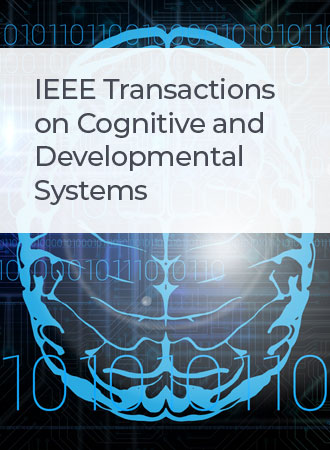A Task-Oriented Deep Learning Approach for Human Localization
IF 4.9
3区 计算机科学
Q1 COMPUTER SCIENCE, ARTIFICIAL INTELLIGENCE
IEEE Transactions on Cognitive and Developmental Systems
Pub Date : 2024-10-24
DOI:10.1109/TCDS.2024.3485886
引用次数: 0
Abstract
Radio-based human sensing has attracted substantial research attention due to its wide range of applications, including e-healthcare monitoring, indoor security, and industrial surveillance. However, most existing studies rely on fixed receivers to capture wireless signal perturbations. This article introduces UH-Sense, the first human sensing system using an unmanned aerial vehicle (UAV) equipped with an omnidirectional antenna to measure signal strength from surrounding WiFi access points (APs). UH-Sense addresses the challenge of multisource UAV-induced noise with a novel data-driven learning-based approach that denoises corrupted data without prior knowledge of noise characteristics. Furthermore, we develop a localization model based on radio tomography imaging (RTI) that localizes humans without collecting the fingerprint database. We demonstrate that UH-Sense is readily deployable on commodity platforms and evaluate its performance in different real-world environments including irregular AP deployment and nonline-of-sight (NLOS) scenarios. Experimental results show that UH-Sense achieves a high detection performance with an average F1 score of 0.93 and yields similar or even better localization performance than that of using clean data (i.e., data collected at a fixed receiver), which has not been achieved by any of the state-of-the-art denoising methods.面向任务的人类定位深度学习方法
基于无线电的人体传感由于其广泛的应用,包括电子医疗监控、室内安全和工业监控,已经引起了大量的研究关注。然而,大多数现有的研究依赖于固定接收器来捕获无线信号扰动。本文介绍了UH-Sense,这是首个使用配备全向天线的无人驾驶飞行器(UAV)来测量周围WiFi接入点(ap)信号强度的人体传感系统。UH-Sense通过一种新颖的基于数据驱动的学习方法解决了多源无人机引起的噪声挑战,该方法可以在不事先了解噪声特性的情况下对损坏数据进行降噪。此外,我们开发了一种基于射电断层成像(RTI)的定位模型,该模型可以在不收集指纹数据库的情况下对人体进行定位。我们证明了UH-Sense很容易部署在商品平台上,并评估了其在不同现实环境中的性能,包括不规则AP部署和非视距(NLOS)场景。实验结果表明,UH-Sense获得了很高的检测性能,平均F1分数为0.93,与使用干净数据(即在固定接收器上收集的数据)的定位性能相似甚至更好,这是目前任何一种最先进的去噪方法都无法实现的。
本文章由计算机程序翻译,如有差异,请以英文原文为准。
求助全文
约1分钟内获得全文
求助全文
来源期刊

IEEE Transactions on Cognitive and Developmental Systems
Computer Science-Software
CiteScore
7.20
自引率
10.00%
发文量
170
期刊介绍:
The IEEE Transactions on Cognitive and Developmental Systems (TCDS) focuses on advances in the study of development and cognition in natural (humans, animals) and artificial (robots, agents) systems. It welcomes contributions from multiple related disciplines including cognitive systems, cognitive robotics, developmental and epigenetic robotics, autonomous and evolutionary robotics, social structures, multi-agent and artificial life systems, computational neuroscience, and developmental psychology. Articles on theoretical, computational, application-oriented, and experimental studies as well as reviews in these areas are considered.
 求助内容:
求助内容: 应助结果提醒方式:
应助结果提醒方式:


